The Driade Premium Model 9 monitor loudspeaker: USA premier by David Abramson
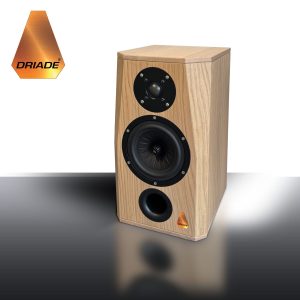
Driade Premium Model 9 and Fanboy Confessional
 I love Christiaan Punter. Not in that way. Sure, Dudley, Reichert, and Lavorgna all spin a tall audio tale or two, but for me, when I really want to know how something sounds, I turn to Christiaan for some good ol’ HiFi-Advice (dot com). Okay, he’s a bit less fun, a bit less the product of a psychedelically soaked youth spent in ripped jeans and tie-dye reading Kerouac and Ginsberg. Still, his straight-up no-chaser way with the printed word in the setting of broad access to elite-level gear gives me the sense I’m grokking the gist of what he’s actually hearing. I finish his reviews and think, ‘Okay- I get it! That’s how the thing sounds relative to the other thing.’ The man is a pragmatic wordsmith, and in our ‘hobby,’ that’s high praise.
I love Christiaan Punter. Not in that way. Sure, Dudley, Reichert, and Lavorgna all spin a tall audio tale or two, but for me, when I really want to know how something sounds, I turn to Christiaan for some good ol’ HiFi-Advice (dot com). Okay, he’s a bit less fun, a bit less the product of a psychedelically soaked youth spent in ripped jeans and tie-dye reading Kerouac and Ginsberg. Still, his straight-up no-chaser way with the printed word in the setting of broad access to elite-level gear gives me the sense I’m grokking the gist of what he’s actually hearing. I finish his reviews and think, ‘Okay- I get it! That’s how the thing sounds relative to the other thing.’ The man is a pragmatic wordsmith, and in our ‘hobby,’ that’s high praise.
I tell you this so you’ll understand why when Christiaan recently reviewed the brand new Dríade Model 9 monitor, comparing them favorably in most regards to his long-standing smaller room references, the wonderful (but less expensive) Xavian Perla Esclusiva monitors (which I too own and love), and even putting them about on par with his long term ‘big room’ reference, the many times pricier Magico S1 Mk. 2, I took my usual careful note or two.
From what I can gather from reading (it’s not like I have espresso with the man), upon being seriously impressed with them at an audio show and finding essentially nothing to criticize, he requested a pair for review. Then he decided he didn’t just like the Model 9. No. In his collected and measured way, he all but sang its praises, even by way of comparison with his aforementioned much, much pricier Magico floorstanders! Yes, in his estimation, it seems the littlest Driades more than held their own against his beloved Magico S1 Mk. 2, references to a degree he hadn’t heard before from a speaker anywhere near its price range.
He almost couldn’t choose between them. Whoa! Far out, man! He then did what any self-respecting reviewer must: bought the review pair (in a custom dark navy finish), thereby replacing his much-loved Xavians.
Now, please understand that we, Christiaan Punter fanboys, know this isn’t a weekly thing for him like it is for me and Steve Huff. For Christiaan, it seems only to happen every few years when just the right-sized asteroid passes too close to the planet. Moreover, Christiaan mentioned in his review that the Model 9 was designed such that it was an easy drive even for pretty low-powered tube amps, the likes of which I just happen to enjoy and have on hand!
Well, sirs, that was enough for me. Reporting for duty! I immediately requested a review pair.
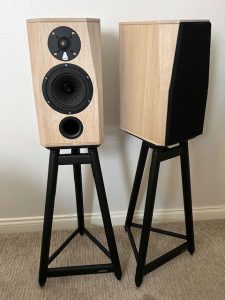
USA Premier: Premiering the Model 9 (and associated system)
After a fair amount of back and forth with Arnold, head man at Driade, and no small amount of begging, I believe I am now in possession of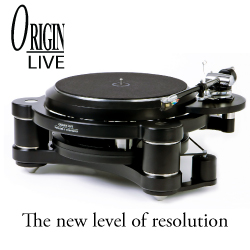 one of, if not the only pair of Dríade Premium Model 9 loudspeakers in North America. And there was no (big, beautiful) import tariff. Yet. Mine are in white-washed oak with dedicated black 24″ high Solidsteel S6 tripod stands. The Model 9s should be bolted to them (tightly, per Arne!).
one of, if not the only pair of Dríade Premium Model 9 loudspeakers in North America. And there was no (big, beautiful) import tariff. Yet. Mine are in white-washed oak with dedicated black 24″ high Solidsteel S6 tripod stands. The Model 9s should be bolted to them (tightly, per Arne!).
The whitewashed oak is beautiful. The dedicated tripod stands divide opinions (in my girlfriend’s case). She also thinks I should have asked for black Model 9s, but that’s another story. I, for one, am proud to debut the Model 9 (or, really, any Dríade loudspeaker) in these American parts!
My plan, I explained to Arnold Herne, head of Driade, was to compare them to my current easy-to-drive main squeeze, the Devore O/babys, and thanks to good fortune and several wealthy benefactors, I happen to have a number of amps on hand with which to do so.

These amps included the exotic Shindo Cortese F2a, a Shindo CV391 (both fronted by a Shindo Monbrison preamp), a Lejonklou Boazu 1.3, a Wells Audio Majestic integrated, and a Pass Labs XA 25. (If some terrific amps I have recently reviewed seem missing from this roll call, well, Shindo isn’t cheap. Leave it at that:)
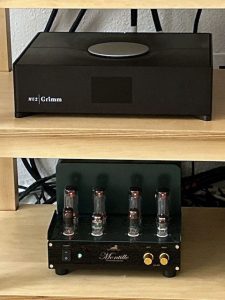
A Grimm MU2 isn’t cheap either (does it really need another review? It’s very, very good). It fronts the entire system and also serves as a preamp for the XA 25. It’s indeed a superb, solid-state preamp when called into action, which is mainly why I chose it over, say, the terrific Lejonklou Källa streamer I loved. Versatility counts for me!
 The wires were Shindo interconnects and Auditorium A23 speaker cables. For the ‘normal’ amps, Audio Art E Statement Cryo speaker cables (thanks to Rob Fritz at Audio Art!) and Cardas Clear interconnects were used, with the occasional Cardas power cable. My rack is the modular one by Box Furniture, and yeah, as you can see from the pictures, it may match the O/baby’s color better than the Driades. I might have to do something about that soon.
The wires were Shindo interconnects and Auditorium A23 speaker cables. For the ‘normal’ amps, Audio Art E Statement Cryo speaker cables (thanks to Rob Fritz at Audio Art!) and Cardas Clear interconnects were used, with the occasional Cardas power cable. My rack is the modular one by Box Furniture, and yeah, as you can see from the pictures, it may match the O/baby’s color better than the Driades. I might have to do something about that soon.
As I mentioned, in his review of the Model 9, Christiaan explains the speaker is by design very easy to drive with a suitably high-ish and flat-ish impedance, so despite a relatively more modest sensitivity, 10-watt tube amps like the Cortese can certainly apply for the job! And they were hired. Now, for a pair of ‘monitors,’ that’s exceedingly rare! Who monitors using a single-ended triode 300B amp!? Well, I do!
Specifically, in terms of specs, the Driade Model 9 is a 6-ohm minimum impedance speaker with an efficiency of 88dB. The designer added by email, “They can (also) play extremely loud easily!” Now, FYI, this is the exact opposite of what I, a condo-dwelling, law-abiding person, care about. (Fortunately, their low-level performance too is exemplary, of which more later).
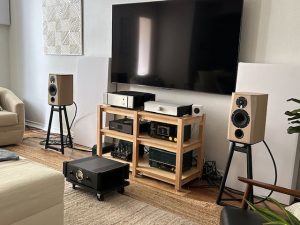
A Room With No View
As regards my room, while lamenting to Arnold that it was less than perfect, he reassured me about it, stating, “Mostly large openings in the back and backside of the room work positively. Room modes are everywhere. I am not a fan of absorption materials, as long there are enough ‘natural’ components in the room, as you have. At some points, absorption materials do something well, but at other points, you disturb the balance. I wonder about the big couch for your feet in front of the sitting couch. I know, I know, you need it, and your partner is also part of the living room.”
Yeah, the ottoman stays! As do some absorptive panels behind the speakers at the front wall and ceiling/wall interfaces. Try to remove them, and things get a little edgier treble-wise with pretty much any speaker I use.
As for my dual Rel Carbon Special subs, Arnold was even less of a fan. “Of course, you can try your subwoofers!” he wrote. “But my knowledge and experience is that the integration with monitors is physically and acoustically very difficult. I can write long technical white papers about this. Only this: low frequencies are slower than higher frequencies, but 50Hz from a woofer with a total moving mass of 6.7 grams! (as the small woofer of the model 9) with a giant motor (magnet, pole plates, and a precise voice coil gap), accelerates and stops much faster than a woofer with a total moving mass of 35.0 grams or more. When you get 25Hz from your subwoofers, room modes will be extended, and more and more in the adjacent rooms.”
He added that ‘I am happy that I have a ‘blessed’ room,’ lording his great room over my relatively crappy one. Sadly, this seems to suggest that speakers with larger and heavier woofers, which are less in need of a subwoofer, may actually blend better with one than a smaller monitor speaker such as the M9. Oh well. Physics.
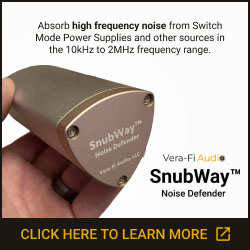 On the subject of setup, of all of the speakers I have had here over the past four or so years (and there have been like ten!), the Model 9 seems least affected by my room issues (some harshness and lack of some bass). From the offing (after break-in), they seemed almost not to care, sounding balanced and beautiful. It could be that they are front-ported, and the Devores, for example, are rear-ported, or that the Model 9 needs less space from walls and is smaller in volume, producing less energy, etc. I don’t know– but they are definitely less affected by issues that were/are the O/baby and certainly less affected than the ill-fated O/96 and Super Nines I had here previously.
On the subject of setup, of all of the speakers I have had here over the past four or so years (and there have been like ten!), the Model 9 seems least affected by my room issues (some harshness and lack of some bass). From the offing (after break-in), they seemed almost not to care, sounding balanced and beautiful. It could be that they are front-ported, and the Devores, for example, are rear-ported, or that the Model 9 needs less space from walls and is smaller in volume, producing less energy, etc. I don’t know– but they are definitely less affected by issues that were/are the O/baby and certainly less affected than the ill-fated O/96 and Super Nines I had here previously.
As for rear-ported speakers, don’t get Arne started, either. “Anyway, we never designed a rear-ported speaker [due to] other technical white papers about rear-ported designs, driver development, crossover development, perfect phase, and the ‘Zen of loudspeaker building.” Yeah—he’s not a fan (and should never ever meet John Devore for tea or in a dark alley). He’s probably not a cat person, either.
As far as the design of the very definitely front-ported Model 9, Arnold informed me, “My Driade colleague since 2015, Maarten Tjallingii, started with the Zen of crossover designs a few years ago. In the meantime, he learned a great deal, with the final result being the M9 monitor, as mentioned in the M9 review on hifi-advice.com. In the prototype period, I listened to many crossover designs. Ultimately, this final design struck the perfect balance, taking into consideration both the physical size of the enclosure and the drivers. Since 1986, I have designed almost all Driade speakers by myself, as well as the drivers. I started in 1988 designing the Eton Hexacone drivers (sandwich Kevlar woofer-cones with a Nomex honeycomb structure between the Kevlar sheets). These drivers were used by many speaker builders, for example, Avalon.
In 2014, I cooperated with Philipp Vavron, and we made the ribbed Carbon-paper cone now used in all Driade models.”
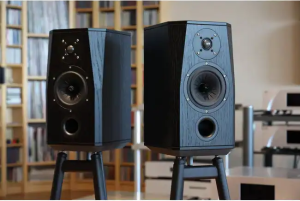
In terms of other models in the Driade lineup, he explained that “a more complete speaker in the deep bass is our Driade model 2S with the 7” ribbed Carbon-paper cone. – 3dB point is 27 Hz. Please read a review from 3 years ago. Indeed, in his review here, Christiaan Punter wrote that the Premium Model 2S produced the best bass I’ve heard from any speaker.” A further tantalizing tidbit, owing to their pleasure with the Model 9 performance and design based on his latest crossover and driver-related thinking, “Maarten is now triggered to make a new Driade floor-standing model based on the principle and sizes of the 2S. This will take at least 9 months before it is ready for production. The 7″ bass-mid driver is perfect. I also designed a 28mm silk dome tweeter, replacing the current 25mm silk dome. We will see!”
Now, if it turns out anything like a larger Model 9, that is going to be one damned impressive loudspeaker in my estimation.
One interesting thing to note regarding the Model 9’s build and its relation to pricing is Arnold’s statement that “building up the first series resulted in a price increase as of September 1, 2025. The speaker is much too laborious hard to build. The European price , including VAT, will be € 4,500 as of September 1, 2025. As the drivers are burned in, measured, paired and the crossover is hard wired with point-to-point connection and central grounding, etc., etc., it is as difficult as building a Driade model 2S!!”
Setup in a room that is not ‘blessed’
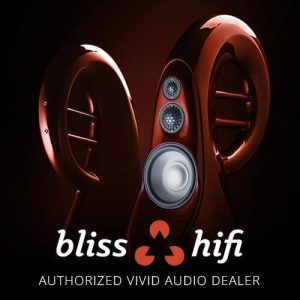 I once spoke with Jim Smith (Get Better Sound) by phone about speaker setup. FYI, that’ll be $75 (I paid him via PayPal a hundred because I felt guilty keeping him on the phone for extra time. It’s a tough room). Jim told me he rarely finds speakers need to be significantly toed in and finds many (including his large Fynes) benefit from a slight toe out.
I once spoke with Jim Smith (Get Better Sound) by phone about speaker setup. FYI, that’ll be $75 (I paid him via PayPal a hundred because I felt guilty keeping him on the phone for extra time. It’s a tough room). Jim told me he rarely finds speakers need to be significantly toed in and finds many (including his large Fynes) benefit from a slight toe out.
I haven’t done that one mostly because it looks weird, but I’ve found him spot on in that almost no speakers I’ve reviewed or owned benefit from extreme levels of toe-in. About 10 degrees or 15 degrees, if any is needed, will suffice —or none at all, with many.
It was quickly determined that the Dríade M9 was no different. Set up about 7-7.5′ apart, tweeter to tweeter, and about 28″ off the front wall (measured from their front baffle); I sat about 9.8 feet away from them. I tried a 20- or 30-degree toe-in, and that was a little too constricted. Less was better; more open. The Devore O/baby works similarly well in a setup like this, and the Driades ended up about where my O/babies generally hang out and with about the same degree of toe-in. The only difference is that it took me months of work to find the right spots for the O/baby, and I still struggle at times to optimize the toe-in and bass with distance from the front wall, etc. Incremental changes can sometimes cause large sonic advances or setbacks. At times, I think they may still be too close to the wall, toed out or too toed in, etc. The Driades, on the other hand, proved pretty happy immediately. They disappeared easily, as monitors do, and I felt more sure they were giving me, if not everything, they could in my room, enough so that I didn’t have too many nagging questions about how I could tweak their performance each time I listened.
With the O/baby, as with previous Devores I’ve owned, the break-in period was quite obvious, as after some finite amount of time (maybe 50-100 hours) playing them, the woofer loosened up, and the bass showed up, often abruptly and surprisingly, while I was in the kitchen cooking eggs. The Driades seemed to break in more gradually, just getting better and better like a camera lens slowly focusing on some faraway goat atop a mountain. The bass didn’t suddenly ‘drop’ while I was making brunch like the Devores, but everything improved over time. They just, over, say, 50-70 hours or so, lost their initial edge and inhibitions and began working and playing well with others. Please note that I typically play at an average level of 67 dB or 68 dB, with peaks reaching 76 to 80 dB. Playing louder may accelerate the break-in process.
Playing the 9’s
In terms of their drivability claims, Dríade is not wrong. First of all, I could deafen myself (if that were my thing) with the 10-watt Cortese. But I wasn’t worried about high-level output, but more so about low and mid-level dynamics. As it happens, I need not have worried. The good news is I also needn’t have worried about the Driade’s abilities at any given volume level with any given amp I chose to pair them with. The M9 is particularly adept at low-level listening (dB levels in the mid-60s, average) and at levels that were, well, as high as I personally dared to go.
Straight up? My initial impressions were something along the lines of ‘imagine an easy-to-drive ATC monitor with a better tweeter and just the right amount of Harbeth thrown in,’ or if you prefer, my long-term monitor reference, the half-as-expensive Xavian Perla Esclusiva, but with bigger scale, more snap, more bass, and more resolution. Imagine a Devore O/baby with an even more refined treble and less of a boxy warm touch to the sound (as appealing as that actually is with them!). Imagine a Spendor 2/3 or 1/2 with better imaging, more speed, less warmth, and much more resolution. I could continue.
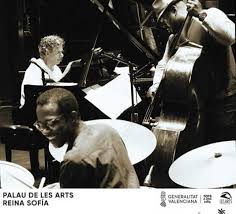 As a bit of a departure from the usual and before we take the obligatory quick spin around my Roon album collection for some specifics, I’m just trying to give you the overall ‘gestalt’ of this remarkable monitor’s character, or lack thereof. [N.B. Yes—I’ve owned and lived with all of the above speakers for a time]. With Chick Corea Trio’s Spain, you can clearly hear that the Driade is the somewhat more refined, resolved, and balanced transducer. For example, there was an advance in the way the Driades resolved stand-up bass notes descending into the upper bass region from the midrange. Zero bloat, zero overhang. On the track ‘This is New’, the weight of that stand-up bass was similarly present, though perhaps more tonally precise, a bit less bloomy. The pluck of the guitar was just as transient and arresting as with the O/Baby, though it contained a bit more wood and body. Instrumental placement was more precise.
As a bit of a departure from the usual and before we take the obligatory quick spin around my Roon album collection for some specifics, I’m just trying to give you the overall ‘gestalt’ of this remarkable monitor’s character, or lack thereof. [N.B. Yes—I’ve owned and lived with all of the above speakers for a time]. With Chick Corea Trio’s Spain, you can clearly hear that the Driade is the somewhat more refined, resolved, and balanced transducer. For example, there was an advance in the way the Driades resolved stand-up bass notes descending into the upper bass region from the midrange. Zero bloat, zero overhang. On the track ‘This is New’, the weight of that stand-up bass was similarly present, though perhaps more tonally precise, a bit less bloomy. The pluck of the guitar was just as transient and arresting as with the O/Baby, though it contained a bit more wood and body. Instrumental placement was more precise.
Yeah, the Dríade model 9 is not bloomy:) From the outset, they were showing themselves to be a rare breed, a highly resolved, extremely open-sounding though non-clinical transducer capable of working and playing well with a wide range of amplification while imaging like the proverbial inglorious bastard. Bloomier certainly with, say, a Shindo Cortese F2A or a CV391 than with a Pass XA 25, but only enough to faithfully transmit each amplifier’s take on the same mid-bass or bass notes; no more, no less. From a smattering of specifics to a generality, I have no idea how the Model 9 measures, but music flows through them like water. Soft to loud and back. It’s frictionless and utterly unencumbered. Tenor Ian Bostridge’s ‘Twilight‘ Schumann Song album was so dynamic that I had to turn the volume down for the forte multiple times. This, despite the quietest passages being whisper-like, such was the dynamic fortitude of this small transducer. The macrodynamic abilities this speaker possesses, given their size, are, in my experience, unprecedented.
 In many ways, the Model 9 began gradually to distinguish itself as astonishing. To wit, for its size, it has astonishingly impactful and resolute bass. It has an astonishingly open sound, which seems utterly independent of its constituent drivers and cabinets. The resultant image can be tall and take up nearly the entire front wall with electronica-style albums like the track Chris from Christine and the Queens or Winnebago from Samia’s “The Baby” album. Impressive. Michelle Ndegeocello’s album ‘The Omnichord Real Book‘ was positively enveloping, and not least because they are doing some seriously crazy electronic shit to the mix that makes it seem like everything is coming from all around you on some tracks. MAN, the Driades are just intoxicating on orgiastic imagistic mixes like this!
In many ways, the Model 9 began gradually to distinguish itself as astonishing. To wit, for its size, it has astonishingly impactful and resolute bass. It has an astonishingly open sound, which seems utterly independent of its constituent drivers and cabinets. The resultant image can be tall and take up nearly the entire front wall with electronica-style albums like the track Chris from Christine and the Queens or Winnebago from Samia’s “The Baby” album. Impressive. Michelle Ndegeocello’s album ‘The Omnichord Real Book‘ was positively enveloping, and not least because they are doing some seriously crazy electronic shit to the mix that makes it seem like everything is coming from all around you on some tracks. MAN, the Driades are just intoxicating on orgiastic imagistic mixes like this!
Switching gears to my usual fare, the Khachaturian piano concerto album with Thibaudet tickling the synthetic ivories demonstrated just how big and small speakers can sound when well-designed. You do indeed get the sense, with the proper levels, that a full-sized piano and (decently scaled) orchestra is going at full tilt, and you’re up in, say the first-level balcony. Now, we all know there’s no way such small transducers can reproduce an orchestra accurately, but it’s a matter of relative scale.
By this, I mean that in MY room at MY preferred volume with the lights out – yeah. You can sort of suspend disbelief just enough to believe it’s happening, and such evenness of tone to boot! Thibaudet’s piano has weight, density, and heft, as well as beauty; the beautiful string textures and the macro-dynamics the Driades are capable of with the 20-watt Shindo CV391 amplifier (which is more spacious-sounding than the Pass XA25, though less resolving in the mid-bass) are just stunning at times. I would say that maybe lower-level microdynamics are done somewhat better by bigger, even more sensitive speakers I’ve had here, such as the Devore O/96. But such larger, more sensitive speakers generally need space from walls, and in my room, I was not able to offer them this. Thus, they were a no-go here and left the building. (And hence my prayers for an even more efficient, larger Driade!) I would add that, yes, such larger and more sensitive speakers also have a much bigger scale than either the O/baby or the Driade 9’s9’s, but that may go without saying.
To continue fawning, the kind of purity and beauty of tone the Model 9 possesses puts me in mind of the Audio Note AN E’s (with the super cool blue hemp cones) I had here briefly on loan from an audio benefactor. While I did not have at all the correct stands for them, and despite my wall construction being of a kind that is apparently not their favorite, I was able to get glimpses of their unique abilities (if not close to the full measure of their bass capabilities) and chief among them was their surpassing beauty of tone and refinement, terrific dynamic punch and at times absolutely reeeee-donculous Imax 3DDD spatial abilities.
I’m telling you, the Driade Model 9 has a similar level of tonal refinement and purity to those Es, though perhaps without their slight (inviting) misty warmth. It also shares with them an ability to image much larger than their physical boxes would suggest. String tone with, say, The Ariel Quartet’s Beethoven Volume 1? Among the most beautifully ethereal I’ve ever heard from any system I’ve had here: glowing, shimmering, and just enough metal. Man, that tweeter is indeed something! Perhaps the best one I’ve heard.
And the sheer scale with the Pass XA25 driving them fronted by the MU2 on ‘Rule Britannia‘ from the BBC’s Last Night of the Proms nearly buggers belief, as does the ambiance and feeling of the hall they reproduce on albums like ‘Virtuoso Music for Horn and Piano,’ not to mention (again) the golden toned purity/beauty of Eric Ruske’s horn.
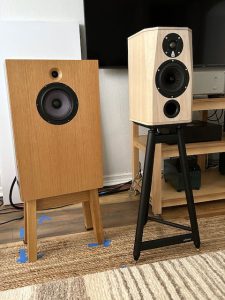
” We’re running out of words to describe sound“ — Angela Gilbert Yeung.
Audio memory is definitely not great, but the E’s had, I think, too, slightly superior micro-dynamic abilities and even more potent macro-dynamic zeal, and their ultra-high efficiency and sheer size likely contribute to this differential. The Model 9 is, I think, the more even-handed of the two tonally, though somehow, it never seems to veer into the sterile or clinical. Quite a feat! Both loudspeakers share a coherence that is utterly beyond analysis or reproach. In this, they are brothers from another mother.
The Model 9 is more even-handed than my Devore O/babys. Its tweeter is the more refined of the two and less prone to slight provocation with certain material. Its bass is tighter, more defined, and less boxy. Its overall tone is less caramelized. On the other hand, the Baby’s are less uptight. They are bloomier and blowsier and perhaps a bit faster/pacier sounding and, in general, a more ‘paper and wood‘ creation, and I love them for this. Their mid-bass, while punchy and fun, is, I’d say, more obviously rounded and less resolute.
Yes, they are certainly more ‘colored‘ than the 9’s. But so what? Maybe that’s a good thing, as I happen to dig their particular colorations and their particular vibe. The Baby’s in this sense have more ‘personality‘ and are a bit less refined in general. But that’s their whole ethos, though, from build to sonics. John never said, “And now presenting the world’s most perfectly linear phase correct monitor speaker…“ and we should all be gladder for it. (Okay, Audio Science Review is like really angry.) Listen, I love them (not Audio Science Review – the O/Babies!), but they do not do what the Model 9’s do. (This is where the Brits say Horses for Courses, but good god, so cliche). They are, instead, a differently beautiful animal.
Summing up and circling back
In sum, to me, it seems the Shindo/Devore thing is an ethos; it’s a sound. Driade is not an ethos; it sounds like what you feed it. Exactly that. Pure, clear, unadorned, and not its own ‘thing.’ Like a guy who gets totally into a new hobby every month —first golf, then RC cars, then Pickleball —the Dríade’s ‘thing‘ is whatever ‘thing‘ you power it with.
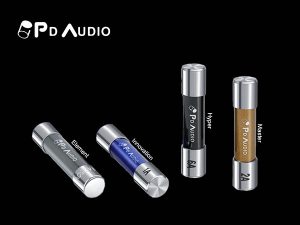 When the music starts to play, the speakers themselves are as not there as I’ve ever heard, and you hear the music as presented by the Pass or the Shindo or the Wells or the Dhartzeel (just kidding! I can’t afford that particular ethos). The thing is, I really LIKE the Shindo/Devore thing! And I also like the non-thing the Dríades do; let’s call it the modern HiFi sound of relative non-sterile neutrality with maybe some extra special engagement thrown in.
When the music starts to play, the speakers themselves are as not there as I’ve ever heard, and you hear the music as presented by the Pass or the Shindo or the Wells or the Dhartzeel (just kidding! I can’t afford that particular ethos). The thing is, I really LIKE the Shindo/Devore thing! And I also like the non-thing the Dríades do; let’s call it the modern HiFi sound of relative non-sterile neutrality with maybe some extra special engagement thrown in.
In sum, the Driades are more spacious in terms of depth and width, more precise in terms of imaging and mid-bass, and overall more even tonally with less of their own sound. They are also relatively (though not entirely) free of what I’ll call ‘small speaker‘: sound, which I hear as constriction and lack of scale. While no speaker with this size cabinet and a 5“ woofer, no matter how advanced, can be entirely free of small speaker vices, the Driades come closer to this ‘small speaker ideal‘ than any I have ever heard. In my room (20‘ by 19.5“ with 10-foot ceilings) they were maybe a bit smaller than would be ideal but still held their own easily with the larger (though also probably too small for my current room!) Devore O/baby. The O/baby, I think, did manage a somewhat larger scale sound, but they are, of course, a larger speaker, both in terms of driver area and box size.
Though easy to drive, they do not seem quite as easy to drive as the Devores and, therefore, might be a better match with amps like the CV391 and the Pass XA than with a Cortese F2a (though in truth, both amps worked beautifully with both transducers). I do think I had a preference for the Cortese with the Devores and felt the Pass matched very well with either. Concluding, the Driade Premium Model 9 is the most self-effacingly neutral transducer I’ve ever owned or used. How it manages to be so utterly pure and neutral without any hardness or sterility to the sound is beyond me, and therein lies its special magic.
To wit, an audio friend of mine recently heard the Driades in my home as fronted by the Grimm MU2/Pass XA 25 setup, and after a few tracks during which he sat silently, presumably in disbelief, exclaimed, “C’mon, David—that’s it. You’re done! Enough messing about with gear; these are phenomenal!“ I couldn’t agree more (except for the part about not messing about with any other gear. Too addictive!)
In any case, if you’d like to experience them for yourself or impress your audio friends, like me, as Driade tries to finalize US distribution, please inquire directly with them. They will be happy to assist you with any advice on system suitability or purchases. Myself? I couldn’t recommend the Premium Model 9 more highly. Christiaan Punter never disappoints his fans, and once again, in my humbler assessment, he’s right on the money. And so is my audio friend, who listened with me and told me to stop here. Yup, I wholeheartedly agree with both of them. To prove it, I have purchased the review pair, which I will love and cherish for all time (until an even larger version of it comes out for bigger rooms! Ha!). Even then, I’ll probably try to find a smaller room to use it in. Look, lots of things we review sound great in the right system, but some are special. The Driade Premium Model 9 is definitely special. In fact, I feel it’s the single best modestly sized transducer I’ve ever experienced. In this regard, it’s absolutely outstanding. Arnold and Maarten, my hat is off to you guys; a masterpiece of modern sonic design in every meaningful way. Keep it up!
I bid you peace
Driade Premium Model 9 Specifications:
Price: Black Oak, White-washed Oak: $ 4.200
Very Dark Blue Oak, Walnut: $ 4.40037 x 20 x 23 cm (H x W x D)
Solid steel S6 24“ stands with dedicated top plates
Freq. Response: 47Hz(-3db) -20KHz
Available finishes: Black, white-wash oak. Custom finish available (inquire)
Driade Premium Model 9 prices a pair, excluding all taxes and transport costs (about $200 a pair)
Solid steel stand, a pair included, Driade mounting plate $550, excluding transport costs (about $100 a pair when shipped together with the monitors)
The European price, including VAT, will be € 4,500 as of September 1, 2025.
Website: www.Driadesystems.com
One thought on "The Driade Premium Model 9 monitor loudspeaker: USA premier by David Abramson"
Leave a Reply
Stereo Times Masthead
Publisher/Founder
Clement Perry
Editor
Dave Thomas
Senior Editors
Frank Alles, Mike Girardi, Russell Lichter, Terry London, Moreno Mitchell, Paul Szabady, Bill Wells, Mike Wright, and Stephen Yan,
Current Contributors
David Abramson, Tim Barrall, Dave Allison, Ron Cook, Lewis Dardick, John Hoffman, Dan Secula, Don Shaulis, Greg Simmons, Eric Teh, Greg Voth, Richard Willie, Ed Van Winkle, Rob Dockery, Richard Doron, and Daveed Turek
Site Management Clement Perry
Ad Designer: Martin Perry


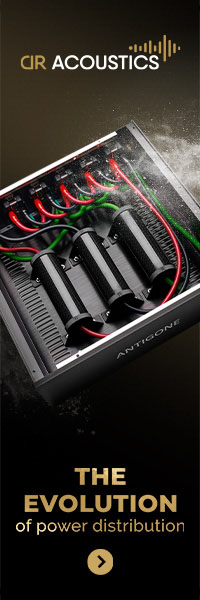
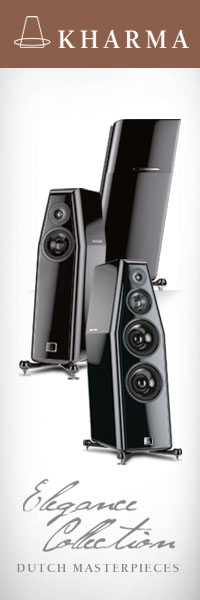
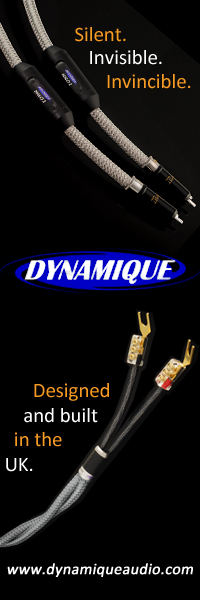
Dear David,
Thanks, thanks, thanks for your amusing, extensive and thorough review of our Driade Model 9 monitor.
Christiaan, Maarten, I and many others are delighted with the way you write and transmit emotion to your readers!
We are also glad with the fact that you do not spend a lot of lost time in acoustic and technical measurements, as many audio review magazines do. As you noticed in our correspondence we measure and simulate a lot but it says not much about the final sound of a loudspeaker. The verdict is always lead by our brain perception.
We got very positive feedback on your review and even consumers, music fanatics, from the US ordered the Model 9.
You should write more!
Kind regards, Arnold